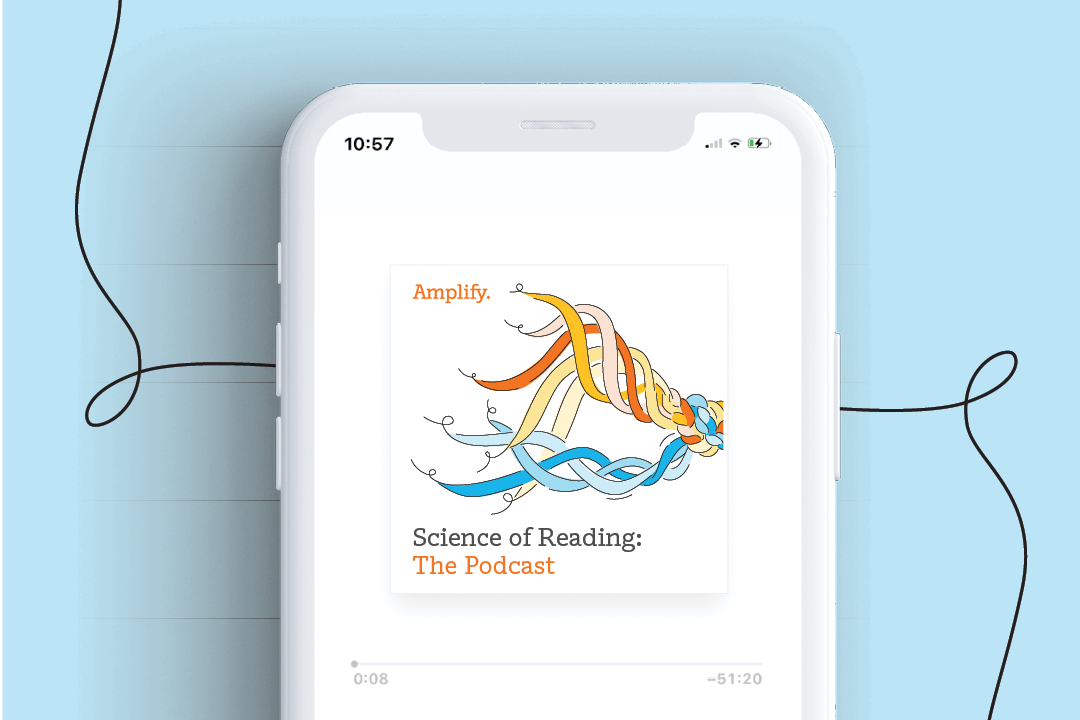
The processes of learning to read and write are so complex, they’ve inspired an entire body of research called the Science of Reading (along with its newer cousin, the Science of Writing). Luckily, literacy experts have distilled these processes into their simplest components.
The result? Two models that help educators understand how students learn to read and write, and the best ways to teach them.
These frameworks—the Simple View of Reading and the Simple View of Writing—align with what reading research tells us about the brain’s processes for decoding, understanding, and creating text. Together, they can support your instructional practices and help all your students become proficient readers. Let’s take a closer look.
What is the Simple View of Reading?
The Simple View of Reading is a model that breaks the capacity to read into two main components:
- Decoding: The ability to recognize words in print, which includes phonics and phonemic awareness.
- Language comprehension: The ability to understand and interpret the meaning of those words.
It’s important to note that reading is not the sum of these parts—it’s the product. Reading success results żě˛ĄłÉČË decoding multiplied by language comprehension. Both are crucial. If either one is weak or nonexistent, the ability to read with understanding collapses. Even if a student can decode every word on a page, they won’t truly be reading if they don’t understand what the words mean. Likewise, no matter how good their comprehension skills, if they can’t decode, they can’t access the text.
Are you curious for more detail? Explore the framework known as the Reading Rope, which breaks these components down further, showing how skills such as phonological awareness, vocabulary, and background knowledge intertwine to create skilled reading. Understanding these connections helps educators develop effective instruction and address specific gaps in literacy skills.
Why is the Simple View of Reading framework so powerful?
The Simple View of Reading gives teachers a clear roadmap.
Instead of wondering why a student is struggling with reading, we can look at their decoding and language comprehension skills separately. Are they having trouble sounding out words? That’s a decoding issue. Struggling to understand a story’s plot? That’s a language comprehension issue.
Once you know where the challenge lies, it’s easier to intervene and teach students effectively.
This model also aligns with the principles of structured literacy. By focusing on explicit, systematic instruction in both decoding and comprehension, educators can build a strong foundation for all learners and support everyone in accessing grade-level text.
The Simple View of Writing: A logical extension
Just as the components of reading can be broken down into two parts, so can writing. They are:
- Transcription: The physical act of writing, including handwriting, spelling, and typing.
- Composition: The ability to generate ideas, organize them, and express them effectively in written form.
Transcription ensures that students can physically put words on a page, while composition helps them turn those words into meaningful text. Writing success equals transcription multiplied by composition. A student may have great ideas (strong composition) but struggle to write them down (weak transcription), or they may write neatly but lack substance.
Putting it together: How these models transform literacy instruction
Reading and writing are closely intertwined. As students improve their decoding, their transcription often follows because both rely on an understanding of letters and sounds. Similarly, language comprehension and composition share a connection—when students build vocabulary and understanding through reading, they’re better equipped to express themselves in writing.
These models allow educators to:
- Pinpoint needs. Are students struggling with spelling? Focus on transcription. Do they have difficulty understanding what they’ve read? Strengthen language comprehension.
- Measure progress. These models provide clear benchmarks for assessing growth. Success in one area (like decoding) can lead to noticeable improvements in another (like comprehension).
- Individualize support. No two students are the same. One child may need help with phonics, while another needs to build vocabulary. The Simple Views let teachers tailor instruction to each learner.
The Simple Views of Reading and Writing remind us that literacy is a combination of distinct yet interconnected skills. By breaking these processes into manageable parts, we can better understand how to help students thrive. And when we focus on both the mechanics and the meaning, we’re not just teaching kids to read and write—we’re giving them the tools to communicate, imagine, and succeed.
More to explore
for a visual breakdown of these powerful frameworks and how they work together to support literacy success.
Plus:
- Listen: Science of Reading: The Podcast: The Simple View of Reading with Laurence Holt
- Follow on Instagram for reading resources and information


